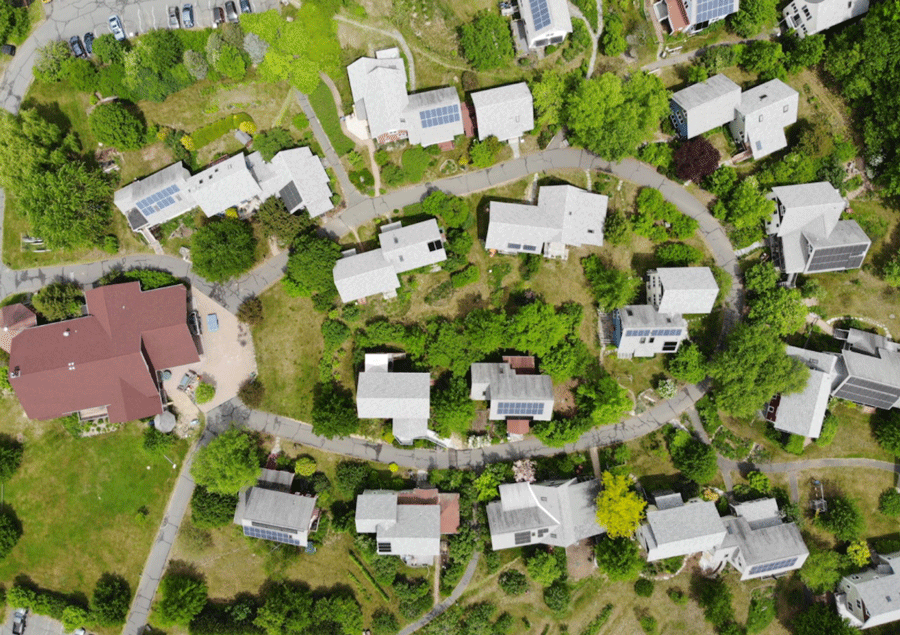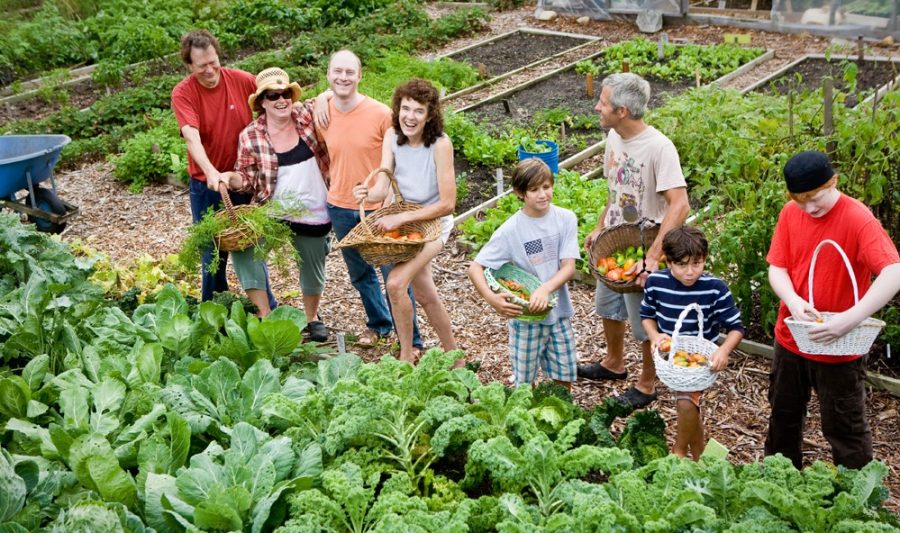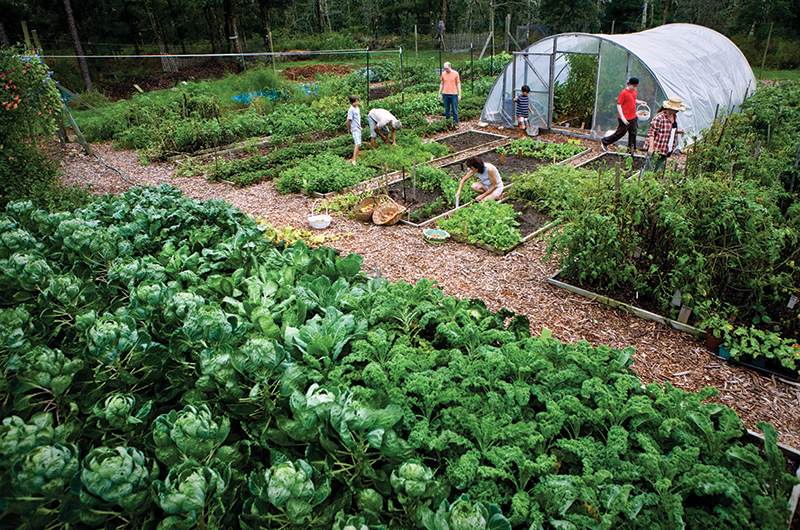We’re All in This Together: Cohousing Comes to Greece

Diana Farr Louis unpacks a tried and tested communal way of living where foreigners, slomads, retirees and families who are dreaming of a new existence in Greece are being seduced by fast internet speeds and the gentler groove of village life.
“With the pandemic, people around the world are realizing how much they need community, and they have come to focus on the importance of health, enjoyment of life, and saner cultural values. At the same time, Greece has opened its arms to those who have dreamt of relocating, initiating its excellent Golden Visa program, as well as new tax and visa initiatives for remote worker families and retirees. All this, combined with fast internet speeds, means that traditional Greek values and lifestyle are calling too many of us.”
 But rather than simply pulling up stakes and moving to an Aegean island or a hamlet in the Peloponnese, Pare Gerou is leading a group of people who are collaborating to form a community before they even leave their homes. Committing to a shared vision, they are using cohousing principles and methods to design their own village.
But rather than simply pulling up stakes and moving to an Aegean island or a hamlet in the Peloponnese, Pare Gerou is leading a group of people who are collaborating to form a community before they even leave their homes. Committing to a shared vision, they are using cohousing principles and methods to design their own village.
As she explained in a Zoom conversation in March, Pare Gerou grew up in Ohio but has family roots in Lesvos, where she fell in love with Greece while swimming in the sea, eating loukoumades, and enjoying her relatives. An attorney, she recently returned to Greece to develop a refugee legal aid office for a major NGO but is currently living in Arizona.
“My career has been in service to refugees. I’ve worked as director of a refugee resettlement agency, professor at a respected law school, and refugee adjudicator for the government. I loved my time developing a legal aid organization for refugees on Lesvos and in Athens, and this organization thrives, but I worked so hard I did not get time to enjoy Greece or my family and community, and I’m ready for a change.
“And now I have a project that combines my two loves: Greece and cohousing. I had the pleasure of living in cohousing for many years, and I found the experience different from any other place I had lived. It was transformative. I loved being a parent to my beautiful son, and living with him in Touchstone cohousing in Michigan https://www.touchstonecohousing.org/ was heaven for both of us. So now that he is older, I have brought together and am now collaborating with a group of people actively planning and developing Greek Village Cohousing. The group is composed of wonderfully warm, talented, multi-faceted, international and Greek men and women who have become the founding members. They are diverse in age and bring many talents to the project: experience in forming a successful cohousing community, a software engineer, a mandolin player, a play therapist, families with children – and the list goes on. We are using cohousing principles and methods to become a community and design our own Cohousing Village in Greece.”
Although cohousing is a concept developed in Denmark in the late 60s, it seems to replicate the notion of a traditional Greek village, where elders are revered and children are adored. Cohousing is not a commune. There is no shared income, political opinion, or religion. Instead, what unites cohousing neighbors is an interest in connection and a dedication to using special design features that contribute to a sense of belonging and enjoyment, as demonstrated in dozens of Danish and US studies. Privately owned homes are grouped around a main square where adults and children linger and chat, and windows open onto common spaces where children can play safely without the presence of cars. The heart of the community is the Common House, which combines the best features of a Greek taverna and a clubhouse, where many joint activities – meals, meetings, crafts workshops, games, celebrations – take place, both spontaneous and planned.
Cohousing is ubiquitous in Denmark, and there are hundreds more in the US, Canada, and New Zealand, but this will be the first cohousing neighborhood in Greece. Besides the Common House, what sets cohousing communities apart from condos or maisonette complexes is that prospective cohousing residents design their neighborhood together and in the process forge bonds and create something that reflects their own shared values. Pare confirms that the group has found developers in Greece who understand this approach to community and have been very welcoming to partnering with them.

But as she says, people – foreigners, digital slomads, remote workers, retirees but also hyphenated Greeks who want to return to their roots – are especially drawn to creating a cohousing community here because of certain characteristics of Greek society. Of course, the climate plays a role, as does proximity to nature and the sea, but even more important is the fact that enjoying life and connecting with others are such essential features of Greek life. It’s impossible to remain anonymous in a Greek village. And then there’s the food.
“The members of the group I’m leading all love the idea of growing their own food in a community garden, and are looking forward to the pleasure of making delicious Greek recipes and sharing meals with their neighbors a few times a week.”
Some cohousing design features are standard: car-free narrow streets, a single parking area, and, most importantly, the “Common House,” around which individual, fully equipped homes are clustered. This unique building contains resources a single household wouldn’t be using the whole time, like tools and a laundry room, but it also possesses a library, big kitchen and large dining area, recreation room for kids, and other areas whose nature depends on the wishes of the members. Besides contributing to lower individual expenses, a design that maximizes shared resources also ensures that neighbors live lightly on the land.
To become familiar with the process of forming a cohousing community, I sat in on a few Zoom meetings. After being introduced to men and women in California, Colorado, Boston, the UK, Athens and Crete, I listened to them discussing their visions for their new lives on a site yet to be chosen either on Crete or in the Peloponnese.
I learned that the ideal size is something between 20-25 houses, that Pare’s group agree on their wish to be near both woods and the sea, and a good school, besides comfort and beauty. Having discovered that one of the members plays the mandolin, the others immediately said they’d like to add a place to dance. They are aiming not only for social connection but want to employ solar heating, water harvesting, and permaculture to be as eco-friendly as possible.
So many issues need to be agreed upon, from the major decision on where to build, finding the right developer, designing the houses and Common House, preparing a vision statement and, of course, reconciling differences of approach and opinion. To arrive at a consensus they use a decision-making method called sociocracy. If help is needed, the wider international cohousing community provides professional counselors as well as information and support. Pare’s experience in living in cohousing and being part of the movement for years, as well as other members’ extensive experience, means the group is well situated to tackle challenges while collaborating. In fact, the whole setup reminded me of what I remember of my son’s Montessori school and my granddaughter’s interest in democratic schools: no one is the boss, everyone is respectful and listens, and this dynamic continues once the community is established. Even the children have a say.

As Pare says, “Our sociocracy decision-making training is a wonderful way of working together and making decisions that make sure all voices are heard and manages decision and conflict. No method is perfect – we are all human and groups have dynamics – but cohousing communities, unlike regular communities, regularly go to training in conflict resolution and decision making so that we are more prepared and able to be together without the ruffled feathers that may occur in other neighborhoods, even a traditional Greek village.
“The real secret sauce of cohousing is that we end up creating not only a community within ourselves but a neighborhood which most people find support their needs better than any other and provides maximum enjoyment. One thing I learned after the vision exercise was how much we all value Greek food culture. Fresh ingredients from our gardens and the sea cooked together in our Common House and shared over a communal table were central to all of our visions of an ideal community. Indeed, Common House meals are the glue that connects us.
“I feel the pandemic has reminded us of these Greek values, and many of us believe going beyond visits to relocate there is a good way to prioritize what we value most.”
 It has been said that cohousing is the best of both worlds; you get to have your privacy and your community. Making decisions with 20 or so other households may feel like too much of an uphill battle for some people, but a solitary existence is known to lower your life expectancy. With over 15 years of cumulative cohousing experience in this group to draw from, plus the enthusiastic recommendations of Pare’s leadership and support from her community of Touchstone, the Greek Village Cohousing project is well placed to become a reality once Covid restrictions ease. If you’d like to learn more about it, visit their website and Facebook page.
It has been said that cohousing is the best of both worlds; you get to have your privacy and your community. Making decisions with 20 or so other households may feel like too much of an uphill battle for some people, but a solitary existence is known to lower your life expectancy. With over 15 years of cumulative cohousing experience in this group to draw from, plus the enthusiastic recommendations of Pare’s leadership and support from her community of Touchstone, the Greek Village Cohousing project is well placed to become a reality once Covid restrictions ease. If you’d like to learn more about it, visit their website and Facebook page.













